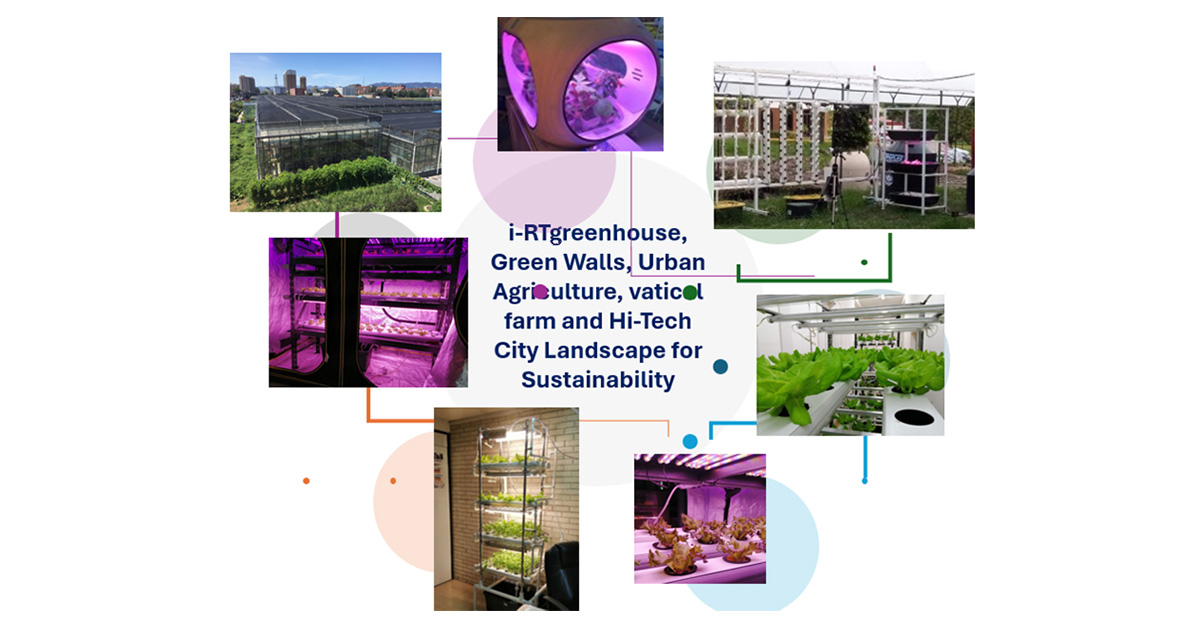i-RTgreenhouse, Green Walls, Urban Agriculture, Vetical Farm and Hi-Tech City Landscape for Sustainability
A special issue of Horticulturae (ISSN 2311-7524).
Deadline for manuscript submissions: closed (15 November 2025) | Viewed by 3482

Special Issue Editors
Interests: CFD simulation; closed greenhouse; automation and climate control; BES modeling and simulation
Special Issues, Collections and Topics in MDPI journals
2. ITS de los Reyes, Carretera Los Reyes-Jacona, Col. Libertad, Los Reyes de Salgado 60300, Mexico
Interests: greenhouse irrigation; environmental comfort; naturally ventilated greenhouse; landsloping greenhouse; relative humidity; thermal difference; tomato and pepper crop; Computational fluid dynamics; greenhouse heat requirements; heating degree day; greenhouse energy use
Interests: energy simulation; numerical simulation; BES simulation; biosystems simulation; greenhouse technology; energy management; agriculture 4.0; climate-smart agriculture; smart irrigation; irrigation and fertilization modeling
Special Issues, Collections and Topics in MDPI journals
Special Issue Information
Dear Colleagues,
Due to current events such as the movement of populations to cities, the effect of extreme weather on open-field agricultural production, and the consumption of critical resources such as water and energy, technological concepts have been developed to reduce the impact of such events. Some of these concepts have achieved implementation, resulting in the development of technologies that enable the efficient use of resources not only in crop production, but in plant growth and the comfort of our living environment. Various techniques can be utilized to form a type of urban agriculture, including cultivation systems in urban areas and the efficient use of resources such as space, water, energy and O2 in plant growth; this would result in a reduction in polluting agents. The adaptation of green plants to walls and ceilings, floating or hanging gardens, vertical crops both indoors and outdoors, and rooftop greenhouses are concepts that have now proven to be viable when aiming to achieve technological development, create an economical and sustainable alternative for the production of low-growing crops, and urban development. Technological advances in water, mineral and gas fertilization, climate control, numerical modeling, control, artificial light, structural design, bioclimatic and the use of natural resources are currently the subject of scientific research that aims to develop alternative means of plant production, urban comfort and pollution reduction.
Dr. Jorge Flores-Velázquez
Dr. Cruz Ernesto Aguilar-Rodríguez
Dr. Edwin Andres Villagran Munar
Guest Editors
Manuscript Submission Information
Manuscripts should be submitted online at www.mdpi.com by registering and logging in to this website. Once you are registered, click here to go to the submission form. Manuscripts can be submitted until the deadline. All submissions that pass pre-check are peer-reviewed. Accepted papers will be published continuously in the journal (as soon as accepted) and will be listed together on the special issue website. Research articles, review articles as well as short communications are invited. For planned papers, a title and short abstract (about 250 words) can be sent to the Editorial Office for assessment.
Submitted manuscripts should not have been published previously, nor be under consideration for publication elsewhere (except conference proceedings papers). All manuscripts are thoroughly refereed through a single-blind peer-review process. A guide for authors and other relevant information for submission of manuscripts is available on the Instructions for Authors page. Horticulturae is an international peer-reviewed open access monthly journal published by MDPI.
Please visit the Instructions for Authors page before submitting a manuscript. The Article Processing Charge (APC) for publication in this open access journal is 2200 CHF (Swiss Francs). Submitted papers should be well formatted and use good English. Authors may use MDPI's English editing service prior to publication or during author revisions.
Keywords
- artificial light
- climate control
- hot spots
- urban gardener
- urban horticulture
- salads
Benefits of Publishing in a Special Issue
- Ease of navigation: Grouping papers by topic helps scholars navigate broad scope journals more efficiently.
- Greater discoverability: Special Issues support the reach and impact of scientific research. Articles in Special Issues are more discoverable and cited more frequently.
- Expansion of research network: Special Issues facilitate connections among authors, fostering scientific collaborations.
- External promotion: Articles in Special Issues are often promoted through the journal's social media, increasing their visibility.
- Reprint: MDPI Books provides the opportunity to republish successful Special Issues in book format, both online and in print.
Further information on MDPI's Special Issue policies can be found here.







